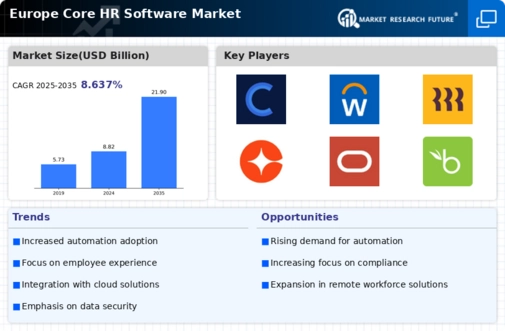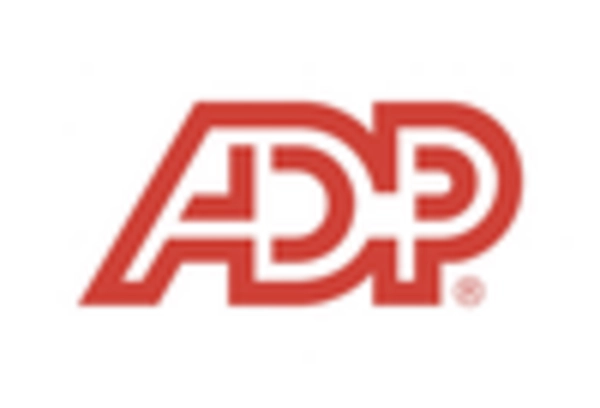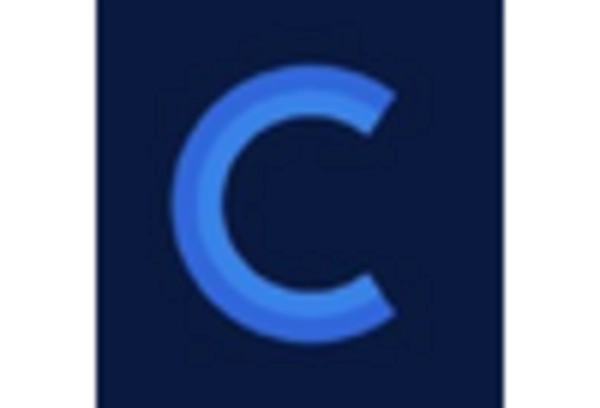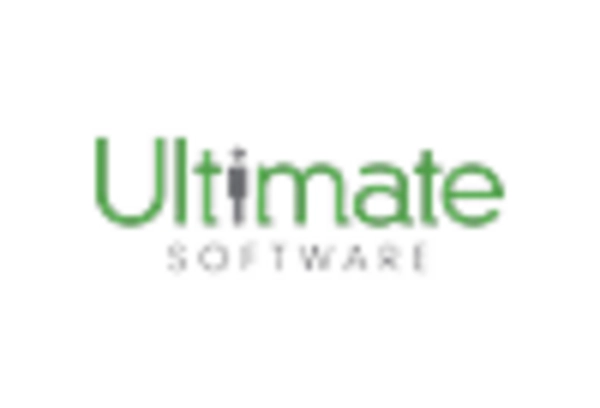Focus on Data Analytics
the core hr-software market in Europe is increasingly driven by data analytics.. Organizations are recognizing the value of data-driven decision-making in managing human resources effectively. Advanced analytics capabilities enable companies to gain insights into employee performance, turnover rates, and workforce trends. This shift is reflected in the growing investment in hr-software solutions that incorporate predictive analytics and reporting functionalities. It is estimated that around 40% of European firms are prioritizing data analytics in their hr strategies, leading to a heightened demand for software that can provide actionable insights. As a result, the core hr-software market is likely to expand as organizations seek to leverage data to enhance their hr practices and improve overall business outcomes.
Shift Towards Remote Work
the core hr-software market in Europe is shifting towards remote work arrangements.. As organizations adapt to flexible work environments, there is a growing need for hr-software that supports remote workforce management. This includes features such as time tracking, performance management, and employee engagement tools tailored for remote teams. According to recent studies, approximately 30% of European companies have adopted hybrid work models, necessitating the integration of technology that facilitates seamless communication and collaboration. Consequently, the demand for core hr-software solutions that cater to remote work dynamics is expected to rise, potentially increasing market growth by 15% in the coming years. This trend underscores the importance of adaptability in hr-software offerings to meet the evolving needs of the workforce.
Regulatory Compliance Pressure
the core hr-software market in Europe faces increasing regulatory compliance pressure.. Organizations must adhere to various labor laws, data protection regulations, and industry standards. For instance, the General Data Protection Regulation (GDPR) mandates strict data handling practices, compelling companies to invest in robust hr-software solutions that ensure compliance. This has led to a surge in demand for software that can automate compliance reporting and maintain accurate records. As a result, the core hr-software market is projected to grow at a CAGR of approximately 10% over the next five years, driven by the need for compliance management features. Companies that fail to comply may face hefty fines, further incentivizing the adoption of comprehensive hr-software solutions that streamline compliance processes.
Emphasis on Employee Well-being
the core hr-software market in Europe emphasizes employee well-being.. Organizations are increasingly aware of the impact of employee health and satisfaction on productivity and retention. This awareness has led to the integration of wellness programs and mental health resources within hr-software solutions. Approximately 25% of European companies are investing in software that offers features such as wellness tracking, employee assistance programs, and feedback mechanisms. This trend indicates a shift towards holistic hr practices that prioritize employee well-being. Consequently, the core hr-software market is expected to grow as companies seek to implement solutions that foster a supportive work environment, potentially increasing market size by 12% over the next few years.
Integration of Mobile Technology
the core hr-software market in Europe is influenced by mobile technology integration.. As the workforce becomes more mobile, there is a growing demand for hr-software solutions that offer mobile accessibility. Employees expect to manage their hr-related tasks, such as leave requests and performance reviews, through mobile applications. Recent surveys indicate that approximately 50% of employees prefer using mobile devices for hr interactions. This trend is prompting organizations to invest in mobile-friendly hr-software solutions that enhance user experience and engagement. As a result, the core hr-software market is likely to see a significant uptick in growth, with projections suggesting an increase of around 18% in mobile-enabled software adoption over the next few years.


















Leave a Comment